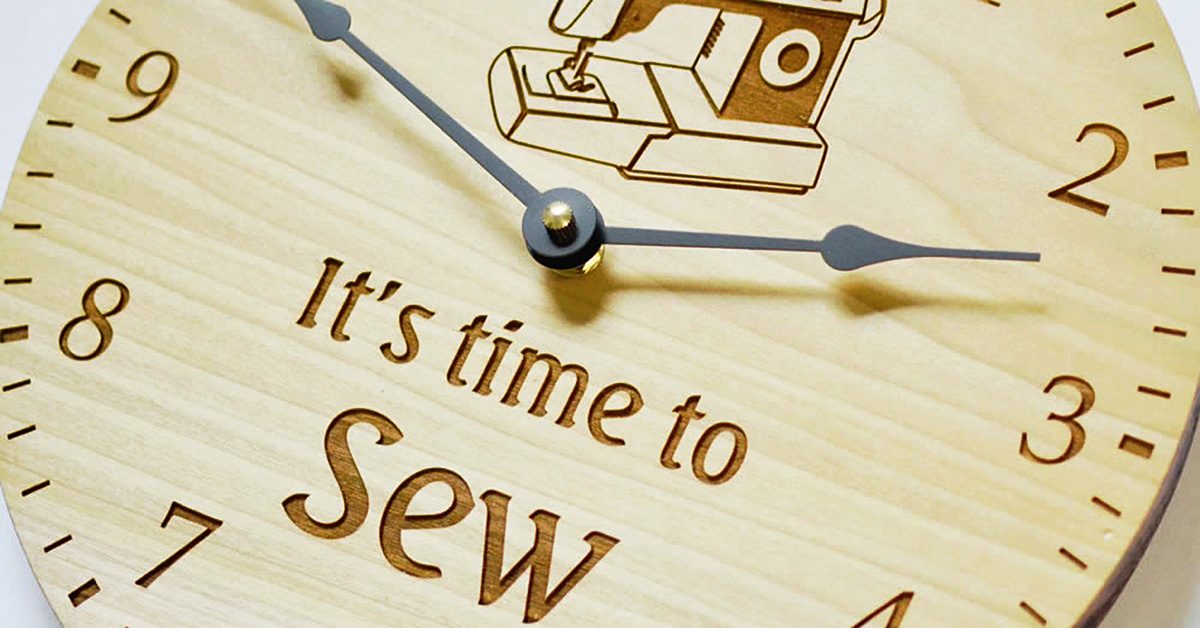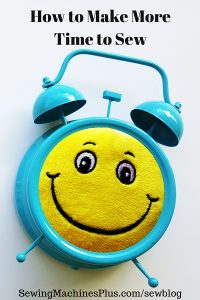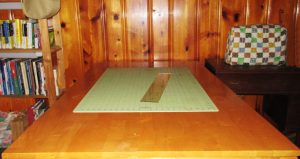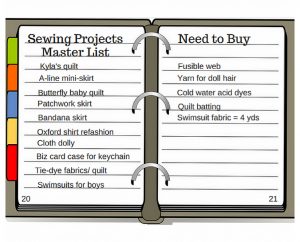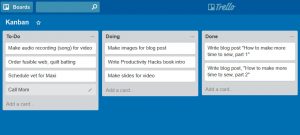You can make more time to sew
Do you have more ideas and things you’d like to make than time to do them?
No matter how many ideas that is, the right answer is no.
You can make more time to do anything you want, including sewing.
Productivity has become one of my passions. In fact, I am outlining a book I’ll write about many productivity hacks I have learned. I’ll share a few of these with you.
Make More Time to Sew
Set up for success
You need an efficient, working sewing system, including machines and workspace. That’s not to say that you can’t use a kitchen table if you don’t have dedicated space. In that case, a big part of your system would be keeping that kitchen table clean and never allowing piles of things to accumulate there. That way, you can whip out your sewing machine and get to work whenever you find a chunk of time to sew.
You do not want to waste time having to clear a space to sew. Keep your spaces clean and clear. Have backups of all machines, if you can. And keep them clean and in good working order. I gave tips about this when I laid out rules for keeping your sewing room in order.
The don’t-do list
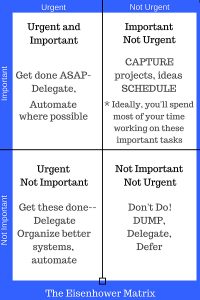
Use the Eisenhower Matrix for prioritizing tasks. Start your don’t do list by dumping all the tasks in the not important, not urgent quadrant.
Here is a great way to grab all kinds of time.
What are you currently doing that someone else could do?
If you are a parent, for example, that job is about raising competent people. And doing things for kids is often a disservice to both of you. It was awfully helpful for me and my kids when I realized this.
My own don’t do list started with only one item I could think to move there—washing dishes. It stayed like that for a long time. Gradually, I started finding things to add and helpers to give tasks to. My don’t do list is quite long by now.
My don’t do list now includes going shopping for groceries, for example. I order groceries online, and my husband is willing to go to the grocery store and pick them up. So I never go out for groceries at all anymore!
This is liberating and frees up all kinds of time to sew.
You can say no!
Do not feel obliged to accept all invitations or requests for your help. Be helpful and social, but remember the rule: don’t do for others what they can do for themselves.
Here is another helpful rule to keep in mind when thinking about your don’t do list: Only do what only you can do.
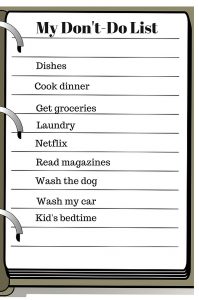
Right now, I’m busy doing so much that only I can do that I have delegated a lot of tasks to others & gained time by having a long don’t do list.
When you are looking at items on your plate and deciding which things to dump, it might be helpful to think of the 10-10-10 question. Just ask what difference a particular task will make in ten minutes, in ten months, and ten years. If it doesn’t matter much in any of these timelines, then perhaps that is a task you can let go and include on your don’t do list.
You can use this question to clearly see and reorder your priorities if necessary, so it is a helpful tool in other ways, too
Capture all your ideas
Achieve a mind like water that is free to flow in whatever container it finds itself by emptying it of all those things you do want to do.
Don’t use your brain power for keeping track of ideas and plans. Write these down. You need to regularly drain your brain, or download data to paper or digital file.
Use a notebook, card file, or organize lists on an app. The important thing is to have a system for tracking all your ideas, projects, and tasks. And use it!
I’ll recommend my two favorite ideas for this: a bullet journal or bujo, as these are affectionately known online, and a kanban, which comes from the system known as kaizen.
Bullet Journal
A bullet journal is a notebook with numbered pages and an index in the front. This helps to organize your lists and information so you can find it. You can have project lists, lists of next actions and Most Important Tasks, books you’d like to read, garments or quilts you want to sew, ideas, sketches. The point is to use it to capture everything you want to keep track of, rather than using your headspace for this.
Kanban
A kanban board is a central tool in the system known as kaizen (“change for better” or “continuous improvement). I find it to be incredibly helpful.
A kanban board is simply three columns: to-do, doing, and done. I have used a white board and also a tri fold board and post-it notes to organize a kanban for some big projects before. Now I use free Trello boards to do this digitally.
The trick to making kanban work for you is to limit the Doing column, and keep it moving. My advice would be to use no more than three doing cards at a time. I allow an absolute maximum of five on mine, but try to keep it to three or just two.
Move these doing cards quickly to done, in a continual stream. The way to successfully do this is to make highly actionable tasks. “Make a quilt,” for example is a PROJECT, not a task or next action. Break projects into next actions. So the first task for “make a quilt,” might be to settle on a design, or if you’ve done that, plan and buy all the fabrics. Next actions in order would then be, prewash fabrics, iron fabrics, cut patchwork pieces, assemble patchwork, finish quilt top, make a quilt sandwich and pin, quilt, bind.

